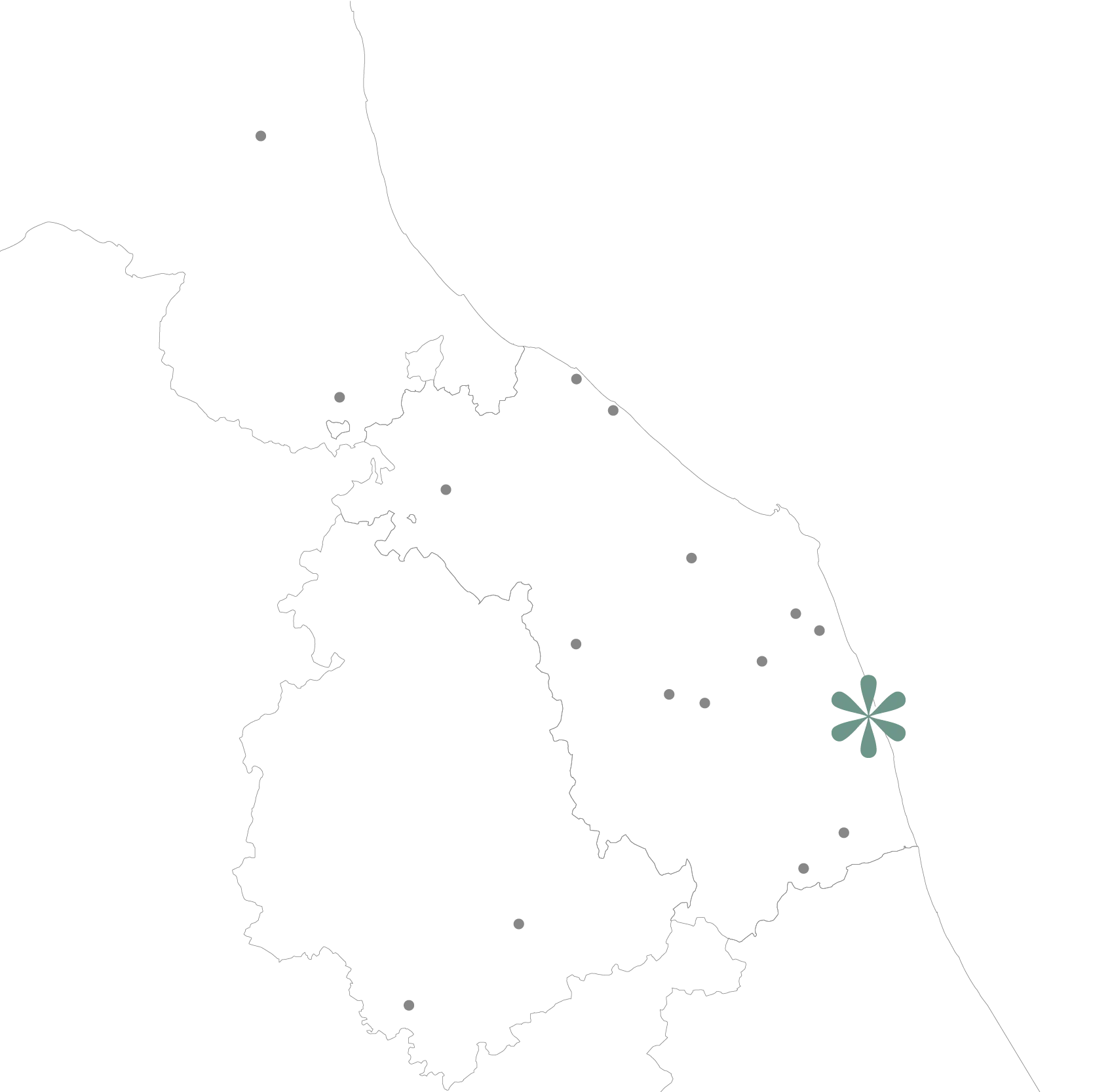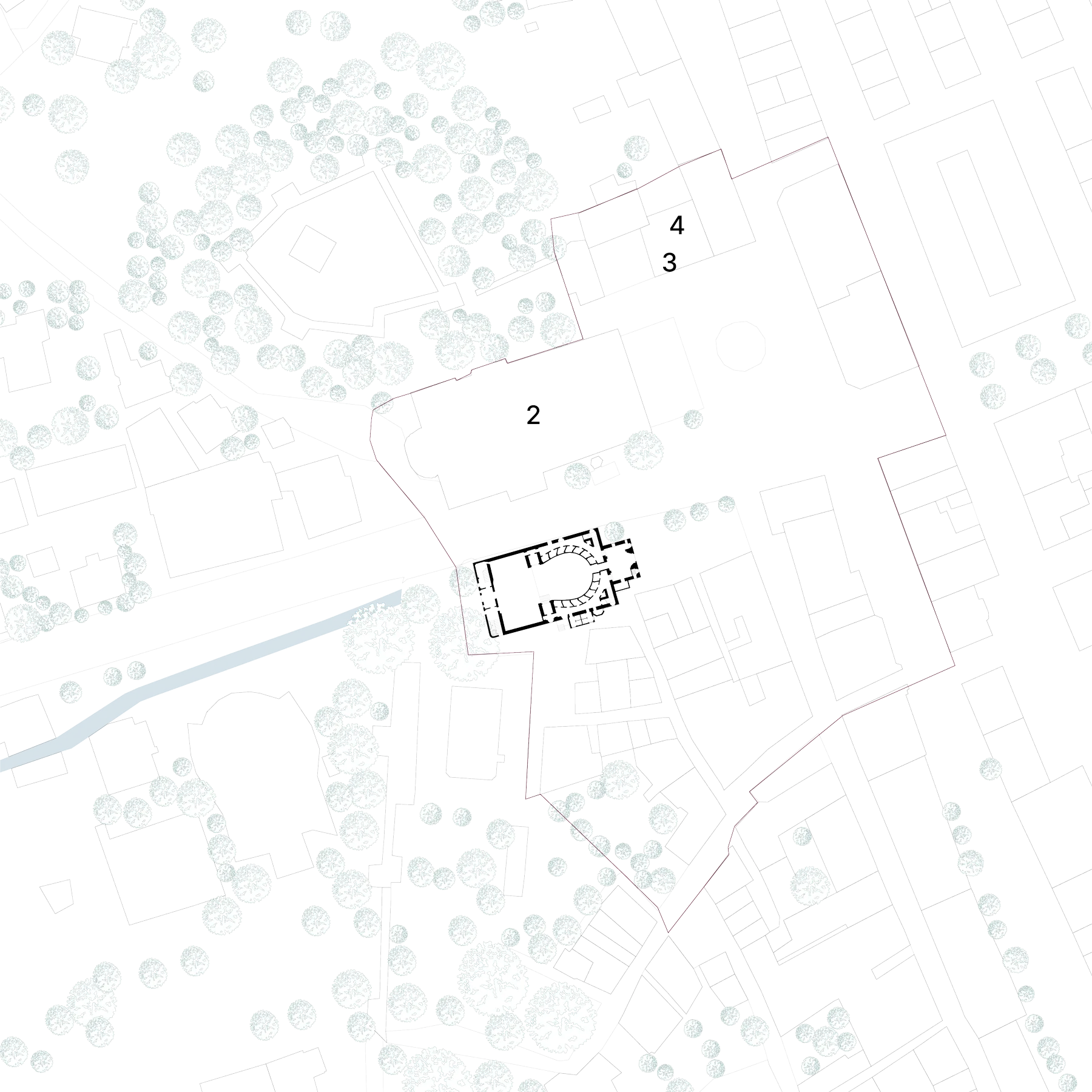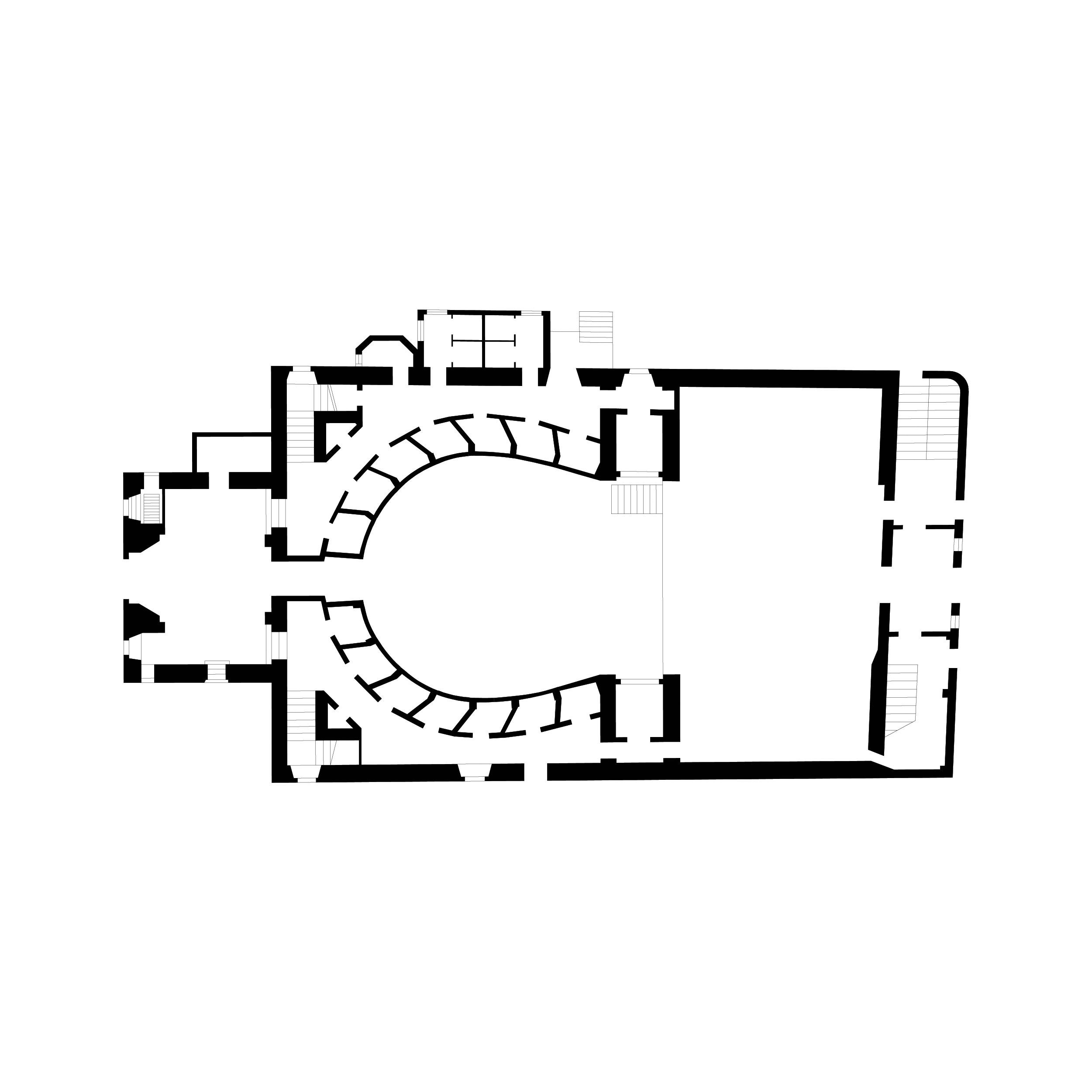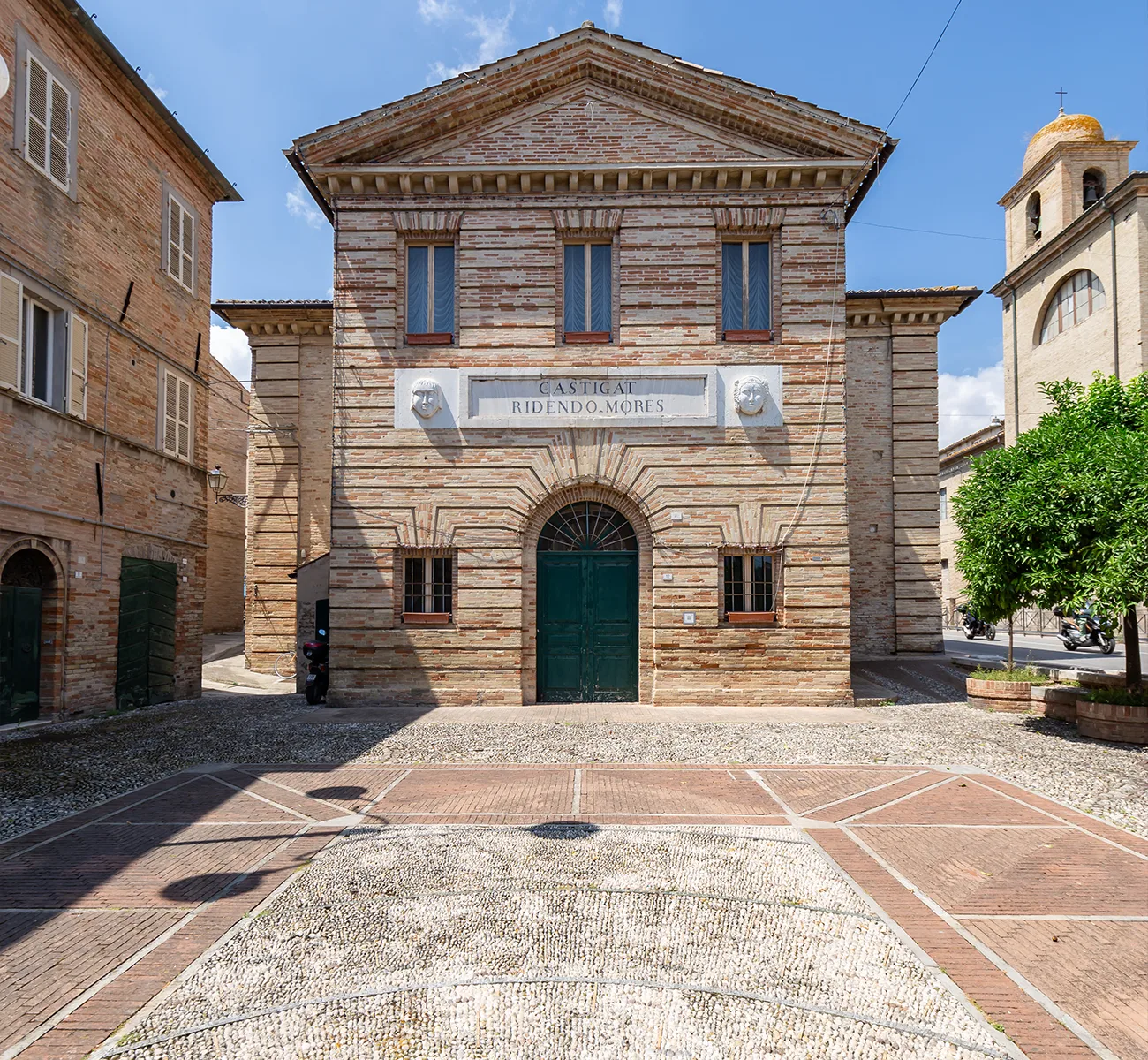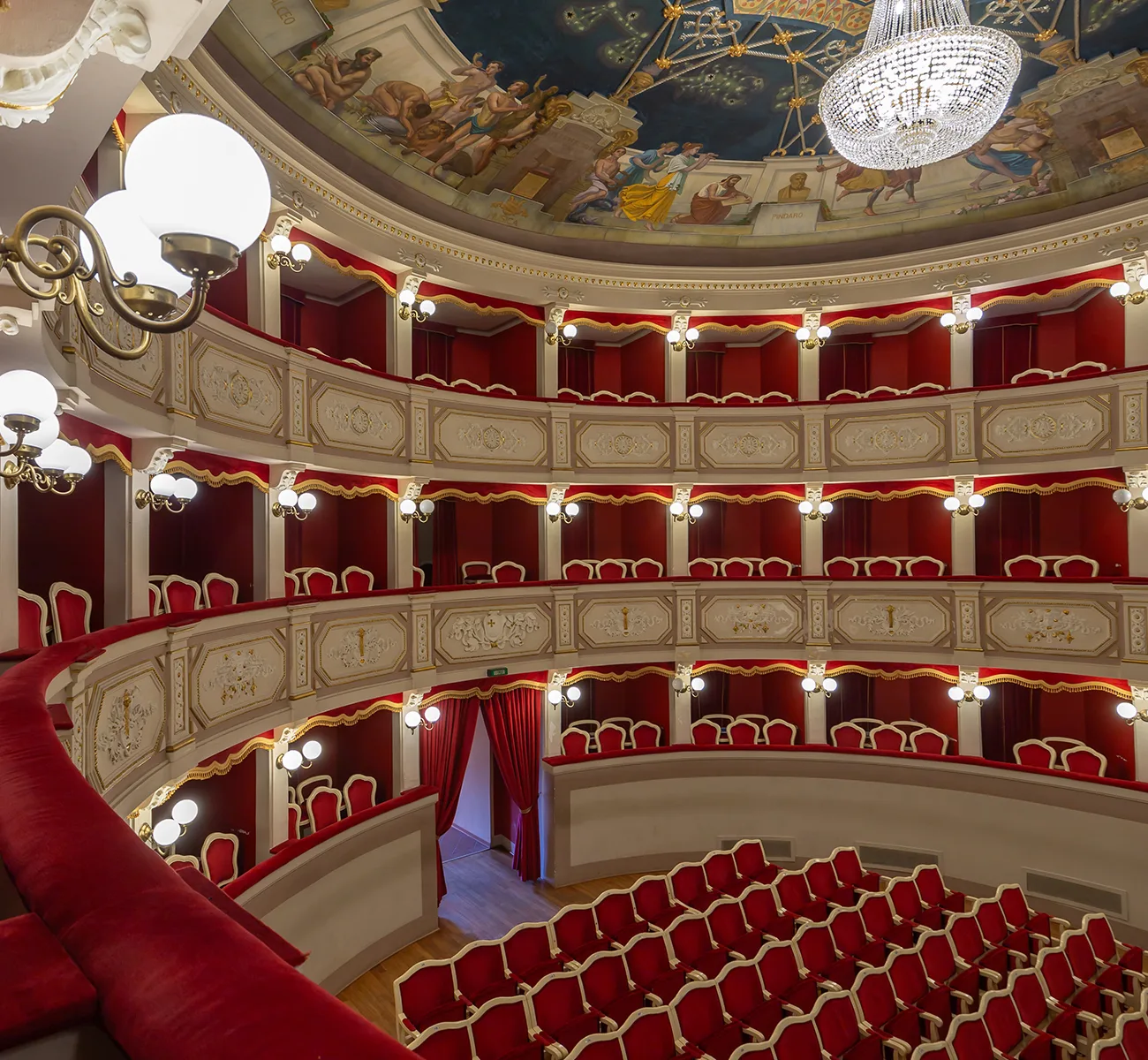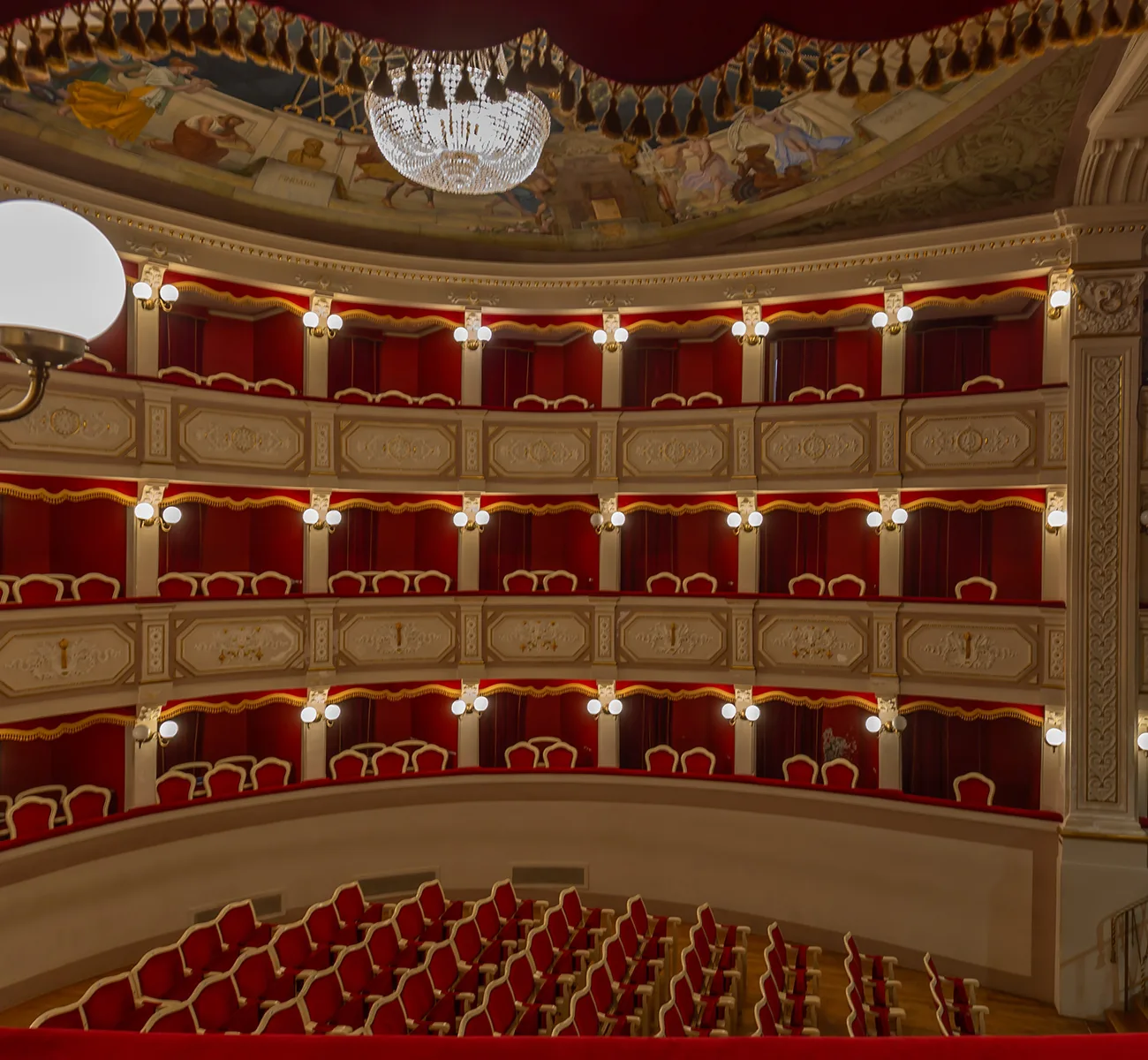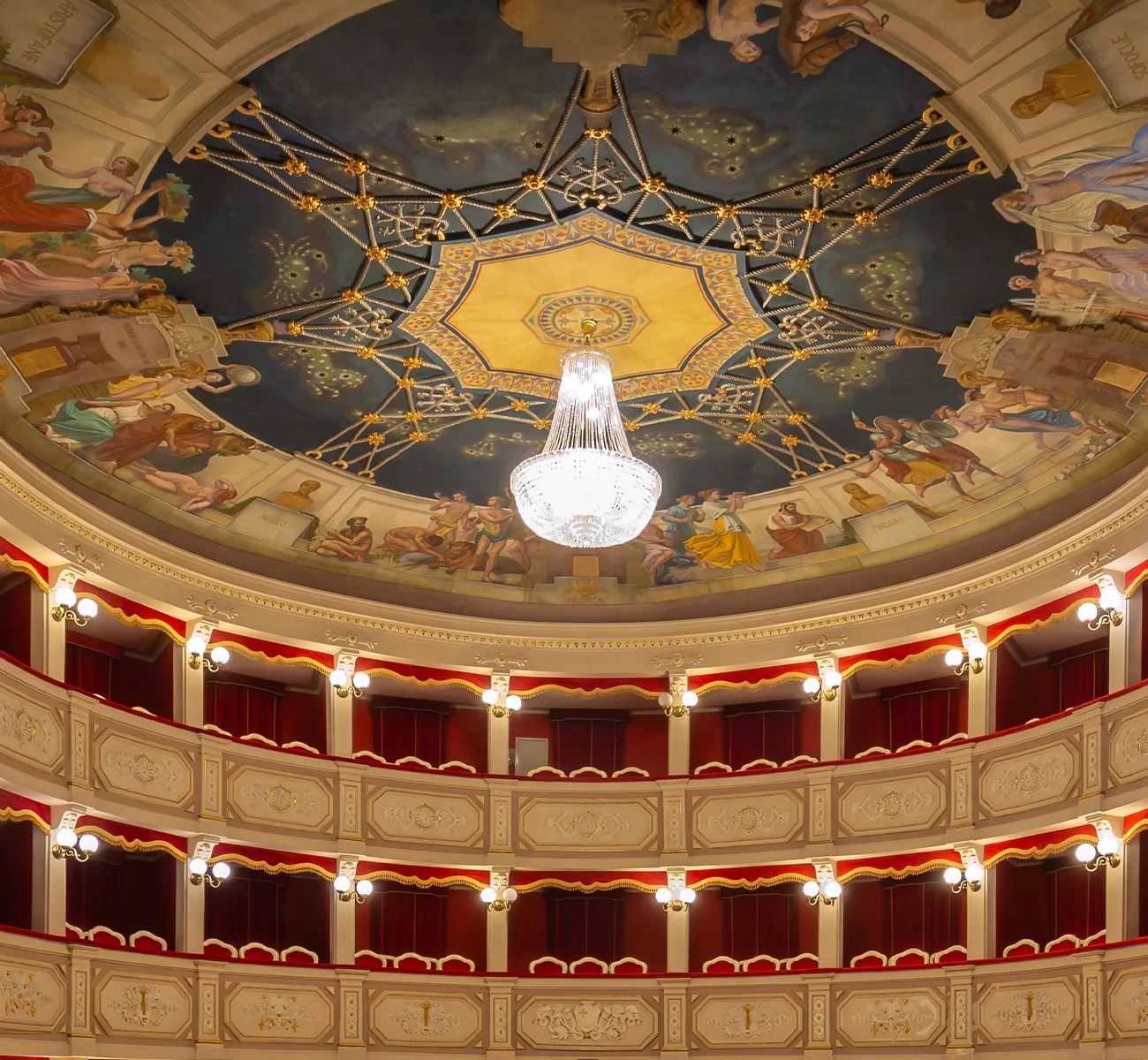The area of the nominated property includes the Teatro Comunale and the Church of San Giorgio Martire. Both buildings embody the historical and cultural essence of the place.
The Teatro Comunale is located on Via Domenico Collina, the long road that connects the seaside town to the city of Fermo and is called Viale Don Giovanni Minzoni in the section nearest the sea. The theatre is a standalone building, designed with the stripped, rationalist aesthetic typical of the Enlightenment. Its compact volume stands in stark contrast to the nearby church of San Giorgio Martire across the street. The neoclassical church presents a screen façade and welcomes the faithful into a majestic space divided into three aisles. In the square in front of the church are the clock tower and the Fontana della Democrazia, the fountain created to celebrate the construction of the aqueduct in Porto San Giorgio.
The Teatro Comunale in Porto San Giorgio is a lively cultural hub located in the heart of the town. The theatre uses manual rope rigging only and does not have a motorised system. An impressive medieval fortress wall behind the theatre adds a historical element to the building’s immediate surroundings.
The Teatro Comunale in Porto San Giorgio offers a varied programme of theatre, opera, classical music, chamber music, jazz, theatre in dialect, and shows for children. The theatre also hosts special events for International Holocaust Remembrance Day, International Women’s Day and the International Day for the Elimination of Violence Against Women. Schools in Porto San Giorgio and Fermo use the theatre for end-of-year performances and various cultural associations organise events and performances there. The theatre partners with 12 cultural associations and is a venue for training courses and conferences for various professionals, including local government employees, lawyers, accountants, healthcare professionals, and educators. The theatre is open for visits by request all year round for groups, schools and guides.
